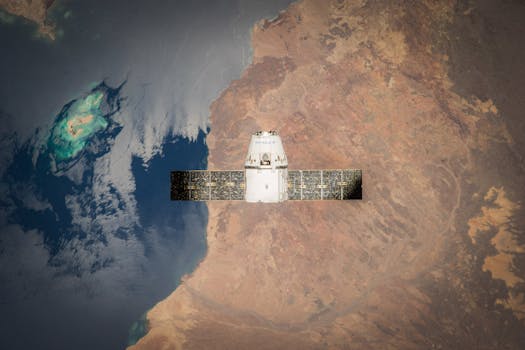The Rise of Mega-Constellations: Latest Updates in Satellite Telecommunications

The Rise of Mega-Constellations: Latest Updates in Satellite Telecommunications
The Rise of Mega-Constellations: Latest Updates in Satellite Telecommunications. The field of satellite telecommunications is undergoing a significant transformation with the emergence of mega-constellations. These constellations, comprising thousands of satellites, are being launched into orbit to provide global internet coverage, bridging the digital divide and enabling a wide range of applications, from remote sensing to navigation. In this article, we will delve into the latest updates in satellite telecommunications, exploring the key players, technologies, and challenges associated with mega-constellations.
Introduction to Mega-Constellations
Mega-constellations are large networks of satellites that operate in low Earth orbit (LEO), approximately 500-2000 kilometers above the Earth’s surface. These satellites are designed to provide high-speed, low-latency internet connectivity to remote and underserved areas, where traditional fiber-optic cables are not feasible. The concept of mega-constellations is not new, but recent advances in space technology and the decreasing cost of launching satellites have made it possible to deploy thousands of satellites in a relatively short period.
Key Players in the Mega-Constellation Market
Several companies are actively involved in the development and launch of mega-constellations, including SpaceX, OneWeb, Amazon’s Kuiper Systems, and Telesat. SpaceX, founded by Elon Musk, is one of the pioneers in this field, with its Starlink constellation aiming to provide global internet coverage with a network of over 42,000 satellites. OneWeb, on the other hand, is launching a constellation of 648 satellites to provide high-speed internet connectivity to underserved areas.
Technological Advancements and Challenges
The development of mega-constellations relies on several technological advancements, including the use of phased array antennas, high-gain antennas, and advanced propulsion systems. However, the deployment of thousands of satellites also poses significant challenges, such as space debris, interference with other satellite systems, and the need for advanced traffic management systems. Furthermore, the high cost of launching and maintaining these satellites is a significant barrier to entry for many companies.
Future Prospects and Applications
Despite the challenges, the potential applications of mega-constellations are vast and diverse. From providing internet connectivity to remote areas to enabling IoT applications, navigation, and remote sensing, these constellations have the potential to transform various industries. Additionally, the development of mega-constellations is driving innovation in space technology, with advancements in areas such as propulsion systems, materials science, and robotics.



